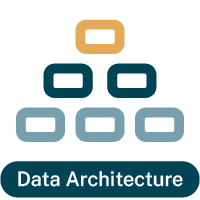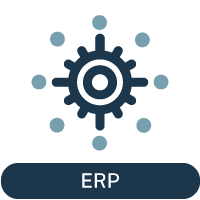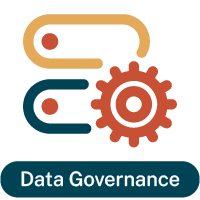Batman and Robin. Hans Solo and Chewbacca. Mario and Luigi. Just like these famous pairings, so it is for data architecture and data governance. They’re aligned to support each other in a variety of ways.
What’s at the top of this data management duo’s priority list? Their shared goal is to create standards and guidelines to support the enterprise. (Think: increasing operational efficiency, decreasing costs, mitigating risk, etc.)
How Data Governance Supports Data Architecture
Your organization’s architecture group should have policies and principles designed and enforced to ensure best practices are followed for any new technology implementation. Your Data Governance Team (DGT) can translate those policies into business requirements and guidelines and help enforce them from a business perspective. For example, the DGT could host education sessions to help the business side understand the importance of data architecture and the impact when its guidelines aren’t followed. This education can aid the business side in its project-planning process and set expectations for what is possible. Without the DGT as a forum, this knowledge transfer only happens on a project-by-project basis and usually only when a request is made that is denied because it doesn’t adhere to the data architecture policies and principles.
Data modeling — an essential component of data architecture — is also critical to data governance. It is rare for the business side to be involved with data modeling (or even care about it much), which gives the DGT a vital role to them understand data modeling. The DGT can translate why it’s a reflection of the operational use of data — and, similarly, a reflection of customer engagement, product positioning and other critical business operations. The hierarchies and data relationships the DGT creates to reflect the view of the customer, for example, need to be instantiated in the appropriate data model(s).
Without a high-level understanding of data modeling, businesspeople may not be able to translate the operational use of data into the systems that house the data. Essentially, the data model needs to reflect the business model, and the DGT can act as a translator and a facilitator to ensure this happens.
How Data Architecture Supports Data Governance
Data architecture provides an understanding of where data exists and how it travels throughout the organization and its systems. It highlights changes and transformations made as data moves from one system to the next. These data inventory and data flow diagrams provide the information and tools the DGT needs to properly make decisions about data policies and standards. These artifacts also help the DGT perform root-cause analysis when the business side raises a data issue and the artifacts help to solve those issues.
Data inventory and data flow diagrams also help determine what can be measured, when and how. They can help identify the possible business impacts associated with improving data quality in the systems by understanding who uses the systems and for what purpose — and facilitate the creation of metrics and measurements. Additionally, these diagrams can help to determine how to measure adherence to standards based on who creates and updates the data and in which systems. Data inventory and data flow diagrams overlaid with data accountability and ownership are key in identifying any gaps in accountability and ownership.
The DGT may also find these artifacts beneficial in educating their groups on the source and usage of data the teams may consider theirs. In many instances, business stakeholders say they’d like to better understand the data landscape and how it moves across the organization. DGT’s role in educating the organization on this information and overlaying it with architectural policies and standards helps to ensure data accuracy and integrity throughout its life cycle.
A Powerful Data Management Duo
By fostering synergy between the governance and architecture groups — and their people, processes and policies — your data management area will reap the rewards of a stronger structure that better aligns with your organization’s goals.




